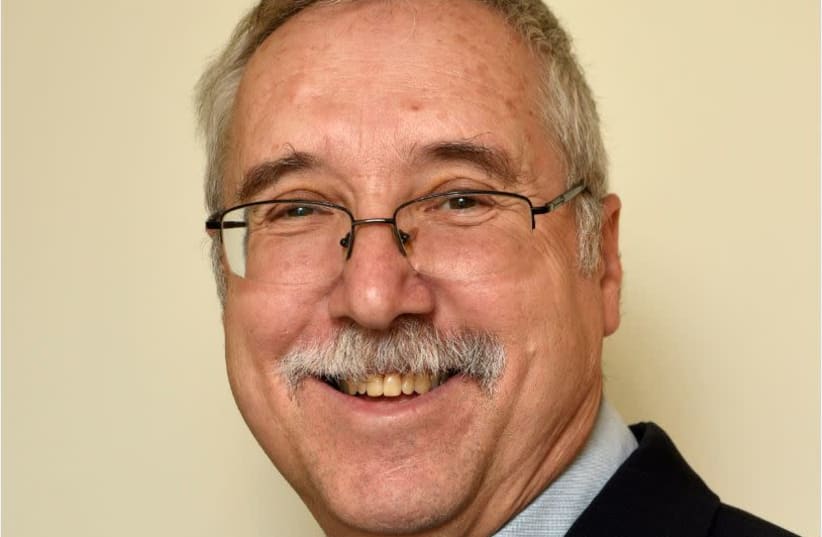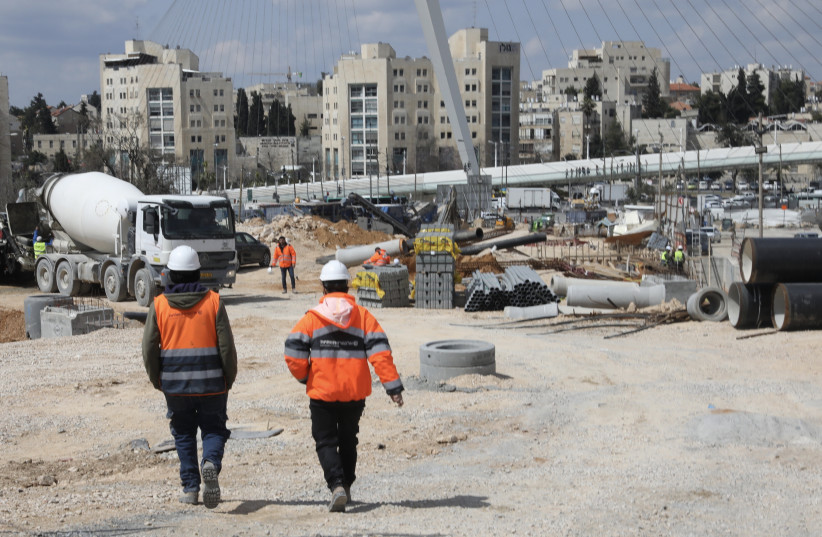Most Jerusalem synagogues will be holding special services in honor of Jerusalem Day, and some will be hosting other Jerusalem Day celebrations as well. As far as synagogue services go, those at the Great Synagogue will be enhanced on Friday night and Saturday by cantor Yitzchak Meir Helfgot, who will join regular cantor Zvi Weiss. Helfgot, who was born into an Israeli hassidic family, is known for his remarkable vocal range. He is also an opera singer and has sung at the most prestigious synagogues and concert halls in Europe, the United States and Australia. For some years now, he has been the resident cantor at New York’s historic Park East Synagogue.
Jerusalem gets Christian Embassy Nature Park
■ THE INTERNATIONAL Christian Embassy Jerusalem (ICEJ) has joined with senior officials of KKL-JNF in dedicating the Christian Embassy Nature Park, located on the western edge of the Be’eri Forest, between the historic ANZAC Memorial and the Gaza security barrier. The ICEJ has partnered with KKL-JNF to replant and restore the 126-acre (512-dunam) plot, which has been renamed the Christian Embassy Nature Park. The area was burned in recent years by rockets launched from Gaza.
The restoration process involves the planting of eucalyptus, native oak and other broad-leaved trees that are less flammable, provide plenty of shade, and grow rapidly even in the desert climate. Other flowering bushes and plants will be introduced to the Christian Embassy Nature Park to add to the eye-catching scenery and attract more visitors.
Presumably, leaders of evangelical congregations visiting Jerusalem will be taken to the park in the Negev to plant a sapling in the same manner as heads of state, foreign ministers and diplomats are taken to a certain grove in Jerusalem near Yad Vashem to plant a sapling. For most of the people who do so, this is one of the most meaningful experiences of their visit to the Holy Land.
Jerusalem's New York Times correspondent publishes book
■ JERUSALEM-BASED New York Times correspondent Isabel Kershner, a veteran member of the Foreign Press Association, which is headquartered in Jerusalem, this week saw the American publication of her book The Land of Hope and Fear: Israel’s Battle for Its Inner Soul.
In her work for the NYT, Kershner writes about Israeli and Palestinian politics and society.
The book, which presents a rich, wide-ranging portrait of the divisions among Israelis today, at a critical juncture in the country’s history, has been reviewed and well received by Israeli, Palestinian and American literary critics. Publishers Weekly described it as “Masterful... nuanced and persuasive,” adding, “This is a valuable dispatch from a country in turmoil.” Former US ambassador to Israel Martin Indyk, who today is affiliated with the New York-based Council on Foreign Relations, praised the book as a “wondrous tale told through the agonizing and uplifting stories of Israel’s many tribes – Jewish and Arab, religious and secular, new immigrants and veterans, soldiers and settlers.”
Prize-winning chief columnist of Yediot Aharonot Nahum Barnea found the book to be a “fascinating journey into the minds and souls of current Israelis, Jews and Arabs. Seventy-five years after its birth, the Jewish state is still struggling over its identity. The Land of Hope and Fear is a must for people who want to understand why and how.”
A significant plaudit came from Palestinian philosopher, author and former president of Al-Quds University Sari Nusseibeh, who wrote: “Once I started reading The Land of Hope and Fear, I couldn’t put it down... For someone living in this country, it felt nonetheless as if I was learning about it for the first time.”
British-born Kershner has been reporting for the NYT since 2007. She previously worked as Middle East editor for The Jerusalem Report, which has since become part of The Jerusalem Post Group. She is married to Jerusalem Report founder and former editor-in-chief South African-born Hirsh Goodman, a former, long-time military reporter for The Jerusalem Post.
Bar-Ilan professor talks fighting antisemitism
■ POLITICAL SCIENTIST and activist Prof. Gerald Steinberg, professor of politics at Bar-Ilan University, will be the guest speaker at the monthly Rosh Hodesh luncheon meeting of Jerusalem Anglo Women, on Sunday, May 21. He will speak on “Strategies for Defeating ‘Apartheid’ Demonization and the New Antisemitism.” The venue is the function hall at Kehillat Mevakshei Derech, 22 Sderot Shai Agnon in San Simon. The hall is on the ground floor and wheelchair accessible. Entrance fee is NIS 50, including a light lunch, and is payable only in cash.
Fighting vandalism in Jerusalem
■ ONE OF the significant changes in Jerusalem has been the sealing off of construction sites with wire netting or wooden or metal fences to ensure that there would be no injury to passersby from items falling from scaffolding. Laurent Levy, who has come under plenty of criticism in this column for doing his own thing without municipal approval simply because he has the money to do so and owns large chunks of property in Jerusalem and beyond, has gone one better, for which he deserves to be commended. Using a synthetic fine leather-like fabric, Levy has covered the construction sites with prints of huge blown-up photographs of the Jerusalem of yesteryear, which he has affixed to solid, protective fences. These images have attracted many people, especially veteran Jerusalemites who remember certain sites that no longer exist but were once iconic. The photographs also give an indication of fashion in the pre-state and early years of the state eras.
Unfortunately the sites also attract vandals as does the site of the projected Knesset Museum, which also features a series of changing prints of historic photographs.
Happily, the poster boards outside the President’s Residence have not yet fallen victim to vandalism. Featuring prints of photographs supplied by the Government Press Office, the images are changed from time to time. For Independence Day, the photographic display included Independence Day receptions for outstanding soldiers dating back to 1956 when the event was much smaller and the President’s Residence was in what is known as The Hut, which is currently part of the Yad Ben Zvi campus in Rehavia.
Featured in the collection of photographs are all past presidents since Yitzhak Ben Zvi, with the exception of Moshe Katsav. Even though his bust is still in the row of presidential busts in the garden of the presidential comple, and his photograph is alongside those of other presidents on the wall of a waiting room in the President’s Office, he is not shown to the passing general public, having served a prison sentence on charges of rape and obstruction of justice.
Unlike the Laurent Levy hotel project on Jaffa Road or the Knesset Museum project on King George Avenue, the poster boards outside the President’s Residence are heavily guarded by machine-gun-toting security personnel, so they are not likely to be defaced.
greerfc@gmail.com

